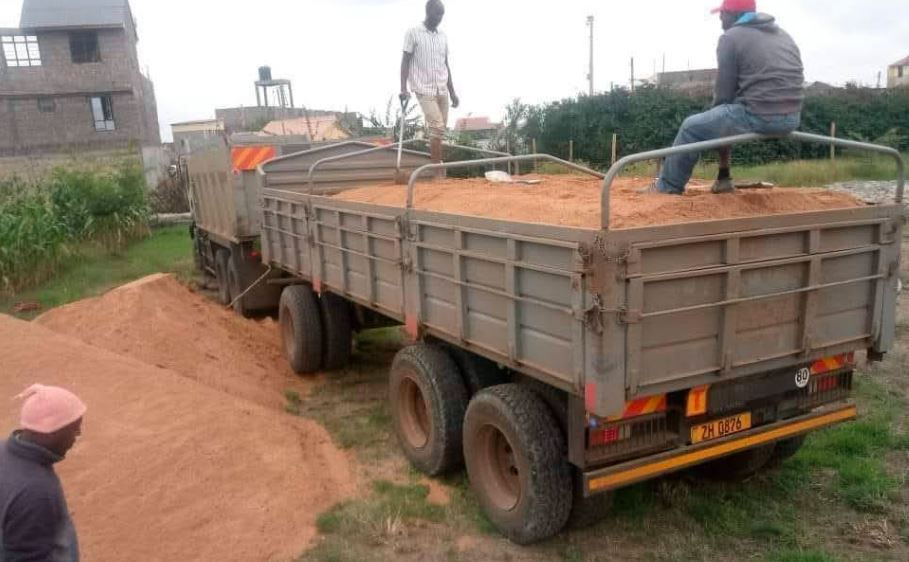Ballast Price in Kenya (2025 Guide): Cost per Ton, Per Lorry, Types & Best Suppliers
- BeyondForest

- Nov 7
- 3 min read
1.)Ballast Price in Kenya (2025 Overview)
2.)Types of Ballast in Kenya (Machine Cut, Quarry Ballast, Kokoto)
3.)Ballast Prices per Ton in Kenya
5.)Factors That Affect Ballast Prices in Kenya
6.)Top Ballast Suppliers In Kenya
Ballast prices in Kenya vary widely depending on location, distance from quarries, and transport costs. In 2025, a standard 18-tonne lorry of ballast ranges between 26,000Ksh and 36,000Ksh across major towns.

Areas closer to quarries such as Kamulu, Ruai, Ruiru, and Kamakis enjoy cheaper rates of 26,000Ksh–28,000Ksh, while destinations like Thika, Juja, Kiambu, and Gatundu are slightly higher at 32,000Ksh–36,000Ksh due to longer delivery distances. Ballast is available in all sizes—½ inch, ¾ inch, and 1 inch—making it suitable for foundations, slabs, and general concrete works.

📍 Want the Exact Ballast Price Delivered to Your Site?
Ballast prices vary depending on your location.
“Tuma location nikwambie inafika na ngapi.”
📞 Call/WhatsApp Felix
0714301491
Types of Ballast in Kenya (Machine Cut, Quarry Ballast, Kokoto)
Kenya has three main types of ballast used in construction: machine-cut ballast, quarry ballast, and kokoto. Machine-cut ballast is produced from hard stone blocks and is uniform, making it ideal for structural concrete and high-strength works. Quarry ballast is the most common type, sourced directly from blasting and crushing quarries. It comes in ½-inch, ¾-inch, and 1-inch sizes and is suitable for foundations, slabs, and cabro preparation.

Kokoto is finer, almost like coarse gravel, and is used for pathways, cabro installation, parking lots, and making concrete blocks. Each type serves specific construction needs depending on required strength and texture.
Ballast Prices per Ton in Kenya
18 tonnes ballast of all sizes
Kamakis | 28,000Ksh |
Mhasibu | 30,000Ksh |
Croton | 30,000Ksh |
ROYSAMBU | 28,000Ksh |
Parklands | 30,000Ksh |
RUIRU | 28,000Ksh |
JUJA | 32,000Ksh |
THIKA | 33,000Ksh |
RUAKA | 32,000Ksh |
KAREN | 32,000Ksh |
GATUNDU | 36,000Ksh |
KIKUYU | 32,000Ksh |
RUAI | 27,000Ksh |
WANGIGE | 32,000Ksh |
MEMBLEY | 29,000Ksh |
UTAWALA | 27,000Ksh |
KAMULU | 26,000Ksh |
KIAMBU | 32,000Ksh |
UMOJA | 28,000Ksh |
Njiruu | 27,000Ksh |
KAHAWA SUKARI | 28,000Ksh |
KAHAWA WEST | 29,000Ksh |
GITHUNGURI | 33,000Ksh |
MIGAA ESTATE | 33,000Ksh |
KENOL | 34,000Ksh |
MACHAKOS Town | 31,000Ksh |
KIMUKA | 31,000Ksh |
NGONG | 32,000Ksh |
BANANA | 31,000Ksh |
RUNDA | 31,000Ksh |
📍 Want the Exact Ballast Price Delivered to Your Site?
Ballast prices vary depending on your location.
“Tuma location nikwambie inafika na ngapi.”
📞 Call/WhatsApp Felix
0714301491
Sand and Ballast Price Comparison
Sand and ballast prices in Kenya vary mainly by location and distance from quarries or river sources. An 18-tonne lorry of ballast ranges between 27,000Ksh and 34,000Ksh, with the cheapest areas being Kamakis, Mwihoko, Mwiki, Ruai, Kitengela, and Kiserian, while places like Kenol, Gatundu, Limuru, Kiambu, and Migaa Estate attract higher prices due to longer delivery routes.
River sand is generally more expensive, ranging from 33,000Ksh to 38,000Ksh per lorry depending on quality and transport. Locations such as Kamakis, Utawala, Donholm, and Githurai have moderate prices, while Kikuyu, Kiambu, and Muthaiga are on the higher end. This comparison helps builders choose the most cost-efficient option for their site.
Factors That Affect Ballast Prices in Kenya
The distance from the quarry is the biggest determinant, as longer transport routes increase fuel and delivery costs.
Road conditions also affect pricing rough or inaccessible areas require higher charges. The type and size of ballast (½ inch, ¾ inch, or mixed) impacts cost depending on processing requirements.
County levies and taxes, especially in Nairobi, Kiambu, and Kajiado, contribute to price differences.
Seasonal factors such as rainy weather can delay quarry operations and raise prices. Finally, demand levels, fuel prices, and supplier competition also shape market rates.
Top Ballast Suppliers In Kenya
Felix | |
Brian | |
Ndarugo Aurum |
Ballast Price in Kenya – Frequently Asked Questions (FAQ)
How much is ballast per ton in Kenya?
Ballast costs 1,500Ksh–2,500Ksh per ton depending on quarry location, transport distance, and ballast size. Nairobi and Kiambu tend to be slightly higher due to demand and fuel costs.

How much is 1 lorry of ballast in Kenya?
A standard 14–18 tonne lorry costs 25,000Ksh–40,000Ksh depending on the region. Short-distance deliveries in Kajiado, Kitengela, and Juja are cheaper, while long routes to Nairobi or upcountry are higher.
How much is 1 lorry of sand in Kenya?
One lorry of river sand (18 tonnes) costs 30,000Ksh–45,000Ksh depending on distance from the river source and county levies. Sand from Kajiado and Machakos is generally cheaper.
What size is a ballast stone?
Common ballast sizes are ¾ inch, ½ inch, and 1-inch stones. ¾-inch ballast is the most popular for foundations, slabs, and structural concrete.
Which ballast is best for house construction?
¾-inch quarry ballast is the strongest and most commonly used for concrete mixes. Machine-cut ballast is used where uniformity is required, while kokoto is ideal for lighter applications.
How much ballast do I need for a 2-bedroom house?
A typical 2-bedroom house uses 1 lorry of 18-tonne ballast for foundation, slab, and column works. Heavy reinforced houses may require slightly more.








Comments